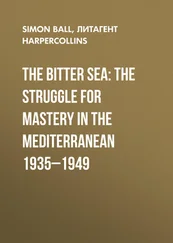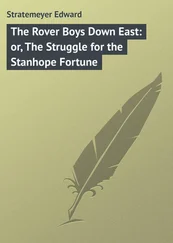Чарльз Дарвин - The Origin of Species by Means of Natural Selection Or, the Preservation of Favoured Races in the Struggle for Life
Здесь есть возможность читать онлайн «Чарльз Дарвин - The Origin of Species by Means of Natural Selection Or, the Preservation of Favoured Races in the Struggle for Life» весь текст электронной книги совершенно бесплатно (целиком полную версию без сокращений). В некоторых случаях можно слушать аудио, скачать через торрент в формате fb2 и присутствует краткое содержание. Год выпуска: 1999, Жанр: Биология, на английском языке. Описание произведения, (предисловие) а так же отзывы посетителей доступны на портале библиотеки ЛибКат.
- Название:The Origin of Species by Means of Natural Selection Or, the Preservation of Favoured Races in the Struggle for Life
- Автор:
- Жанр:
- Год:1999
- ISBN:нет данных
- Рейтинг книги:3 / 5. Голосов: 1
-
Избранное:Добавить в избранное
- Отзывы:
-
Ваша оценка:
- 60
- 1
- 2
- 3
- 4
- 5
The Origin of Species by Means of Natural Selection Or, the Preservation of Favoured Races in the Struggle for Life: краткое содержание, описание и аннотация
Предлагаем к чтению аннотацию, описание, краткое содержание или предисловие (зависит от того, что написал сам автор книги «The Origin of Species by Means of Natural Selection Or, the Preservation of Favoured Races in the Struggle for Life»). Если вы не нашли необходимую информацию о книге — напишите в комментариях, мы постараемся отыскать её.
The Origin of Species by Means of Natural Selection Or, the Preservation of Favoured Races in the Struggle for Life — читать онлайн бесплатно полную книгу (весь текст) целиком
Ниже представлен текст книги, разбитый по страницам. Система сохранения места последней прочитанной страницы, позволяет с удобством читать онлайн бесплатно книгу «The Origin of Species by Means of Natural Selection Or, the Preservation of Favoured Races in the Struggle for Life», без необходимости каждый раз заново искать на чём Вы остановились. Поставьте закладку, и сможете в любой момент перейти на страницу, на которой закончили чтение.
Интервал:
Закладка:
With respect to the steps by which these curious organs have been evolved, Mr. Agassiz infers from his own researches and those of Mr. Muller, that both in star-fishes and sea-urchins the pedicellariae must undoubtedly be looked at as modified spines. This may be inferred from their manner of development in the individual, as well as from a long and perfect series of gradations in different species and genera, from simple granules to ordinary spines, to perfect tridactyle pedicellariae. The gradation extends even to the manner in which ordinary spines and the pedicellariae, with their supporting calcareous rods, are articulated to the shell. In certain genera of star-fishes, "the very combinations needed to show that the pedicellariae are only modified branching spines" may be found. Thus we have fixed spines, with three equi-distant, serrated, movable branches, articulated to near their bases; and higher up, on the same spine, three other movable branches. Now when the latter arise from the summit of a spine they form, in fact, a rude tridactyle pedicellariae, and such may be seen on the same spine together with the three lower branches. In this case the identity in nature between the arms of the pedicellariae and the movable branches of a spine, is unmistakable. It is generally admitted that the ordinary spines serve as a protection; and if so, there can be no reason to doubt that those furnished with serrated and movable branches likewise serve for the same purpose; and they would thus serve still more effectively as soon as by meeting together they acted as a prehensile or snapping apparatus. Thus every gradation, from an ordinary fixed spine to a fixed pedicellariae, would be of service.
In certain genera of star-fishes these organs, instead of being fixed or borne on an immovable support, are placed on the summit of a flexible and muscular, though short, stem; and in this case they probably subserve some additional function besides defence. In the sea-urchins the steps can be followed by which a fixed spine becomes articulated to the shell, and is thus rendered movable. I wish I had space here to give a fuller abstract of Mr. Agassiz's interesting observations on the development of the pedicellariae. All possible gradations, as he adds, may likewise be found between the pedicellariae of the star-fishes and the hooks of the Ophiurians, another group of the Echinodermata; and again between the pedicellariae of sea-urchins and the anchors of the Holothuriae, also belonging to the same great class.
Certain compound animals, or zoophytes, as they have been termed, namely the Polyzoa, are provided with curious organs called avicularia. These differ much in structure in the different species. In their most perfect condition they curiously resemble the head and beak of a vulture in miniature, seated on a neck and capable of movement, as is likewise the lower jaw or mandible. In one species observed by me, all the avicularia on the same branch often moved simultaneously backwards and forwards, with the lower jaw widely open, through an angle of about 90 degrees, in the course of five seconds; and their movement caused the whole polyzoary to tremble. When the jaws are touched with a needle they seize it so firmly that the branch can thus be shaken.
Mr. Mivart adduces this case, chiefly on account of the supposed difficulty of organs, namely the avicularia of the Polyzoa and the pedicellariae of the Echinodermata, which he considers as "essentially similar," having been developed through natural selection in widely distinct divisions of the animal kingdom. But, as far as structure is concerned, I can see no similarity between tridactyle pedicellariae and avicularia. The latter resembles somewhat more closely the chelae or pincers of Crustaceans; and Mr. Mivart might have adduced with equal appropriateness this resemblance as a special difficulty, or even their resemblance to the head and beak of a bird. The avicularia are believed by Mr. Busk, Dr. Smitt and Dr. Nitsche—naturalists who have carefully studied this group—to be homologous with the zooids and their cells which compose the zoophyte, the movable lip or lid of the cell corresponding with the lower and movable mandible of the avicularium. Mr. Busk, however, does not know of any gradations now existing between a zooid and an avicularium. It is therefore impossible to conjecture by what serviceable gradations the one could have been converted into the other, but it by no means follows from this that such gradations have not existed.
As the chelae of Crustaceans resemble in some degree the avicularia of Polyzoa, both serving as pincers, it may be worth while to show that with the former a long series of serviceable gradations still exists. In the first and simplest stage, the terminal segment of a limb shuts down either on the square summit of the broad penultimate segment, or against one whole side, and is thus enabled to catch hold of an object, but the limb still serves as an organ of locomotion. We next find one corner of the broad penultimate segment slightly prominent, sometimes furnished with irregular teeth, and against these the terminal segment shuts down. By an increase in the size of this projection, with its shape, as well as that of the terminal segment, slightly modified and improved, the pincers are rendered more and more perfect, until we have at last an instrument as efficient as the chelae of a lobster. And all these gradations can be actually traced.
Besides the avicularia, the polyzoa possess curious organs called vibracula. These generally consist of long bristles, capable of movement and easily excited. In one species examined by me the vibracula were slightly curved and serrated along the outer margin, and all of them on the same polyzoary often moved simultaneously; so that, acting like long oars, they swept a branch rapidly across the object-glass of my microscope. When a branch was placed on its face, the vibracula became entangled, and they made violent efforts to free themselves. They are supposed to serve as a defence, and may be seen, as Mr. Busk remarks, "to sweep slowly and carefully over the surface of the polyzoary, removing what might be noxious to the delicate inhabitants of the cells when their tentacula are protruded." The avicularia, like the vibracula, probably serve for defence, but they also catch and kill small living animals, which, it is believed, are afterwards swept by the currents within reach of the tentacula of the zooids. Some species are provided with avicularia and vibracula, some with avicularia alone and a few with vibracula alone.
It is not easy to imagine two objects more widely different in appearance than a bristle or vibraculum, and an avicularium like the head of a bird; yet they are almost certainly homologous and have been developed from the same common source, namely a zooid with its cell. Hence, we can understand how it is that these organs graduate in some cases, as I am informed by Mr. Busk, into each other. Thus, with the avicularia of several species of Lepralia, the movable mandible is so much produced and is so like a bristle that the presence of the upper or fixed beak alone serves to determine its avicularian nature. The vibracula may have been directly developed from the lips of the cells, without having passed through the avicularian stage; but it seems more probable that they have passed through this stage, as during the early stages of the transformation, the other parts of the cell, with the included zooid, could hardly have disappeared at once. In many cases the vibracula have a grooved support at the base, which seems to represent the fixed beak; though this support in some species is quite absent. This view of the development of the vibracula, if trustworthy, is interesting; for supposing that all the species provided with avicularia had become extinct, no one with the most vivid imagination would ever have thought that the vibracula had originally existed as part of an organ, resembling a bird's head, or an irregular box or hood. It is interesting to see two such widely different organs developed from a common origin; and as the movable lip of the cell serves as a protection to the zooid, there is no difficulty in believing that all the gradations, by which the lip became converted first into the lower mandible of an avicularium, and then into an elongated bristle, likewise served as a protection in different ways and under different circumstances.
Читать дальшеИнтервал:
Закладка:
Похожие книги на «The Origin of Species by Means of Natural Selection Or, the Preservation of Favoured Races in the Struggle for Life»
Представляем Вашему вниманию похожие книги на «The Origin of Species by Means of Natural Selection Or, the Preservation of Favoured Races in the Struggle for Life» списком для выбора. Мы отобрали схожую по названию и смыслу литературу в надежде предоставить читателям больше вариантов отыскать новые, интересные, ещё непрочитанные произведения.
Обсуждение, отзывы о книге «The Origin of Species by Means of Natural Selection Or, the Preservation of Favoured Races in the Struggle for Life» и просто собственные мнения читателей. Оставьте ваши комментарии, напишите, что Вы думаете о произведении, его смысле или главных героях. Укажите что конкретно понравилось, а что нет, и почему Вы так считаете.












